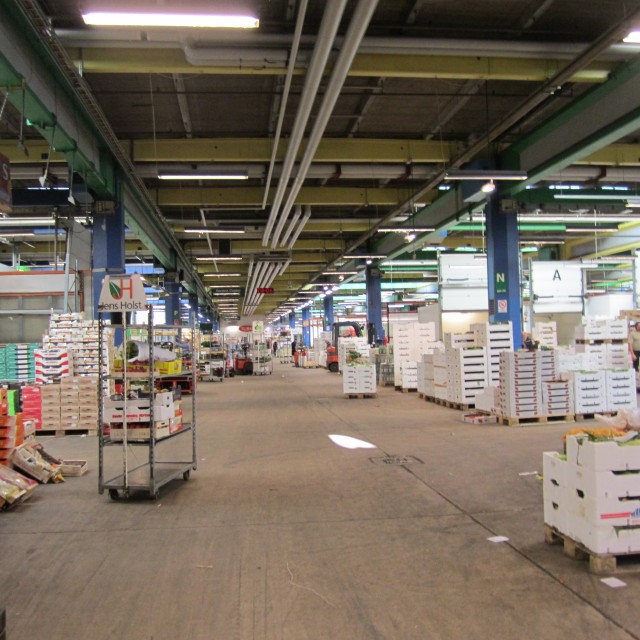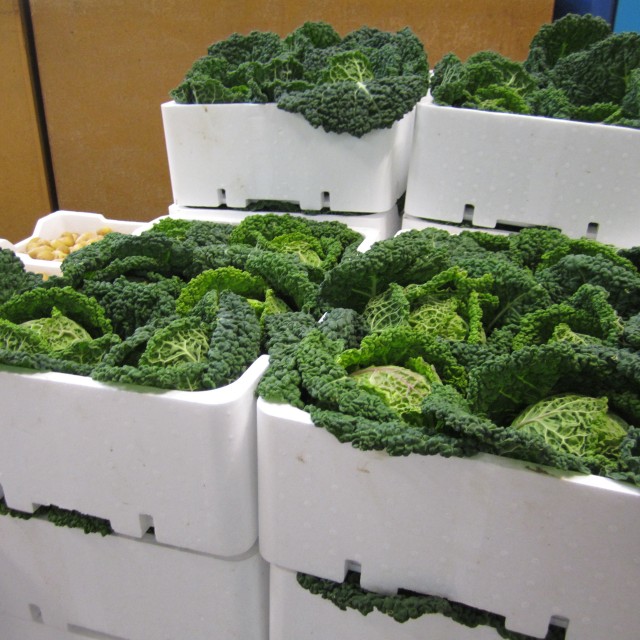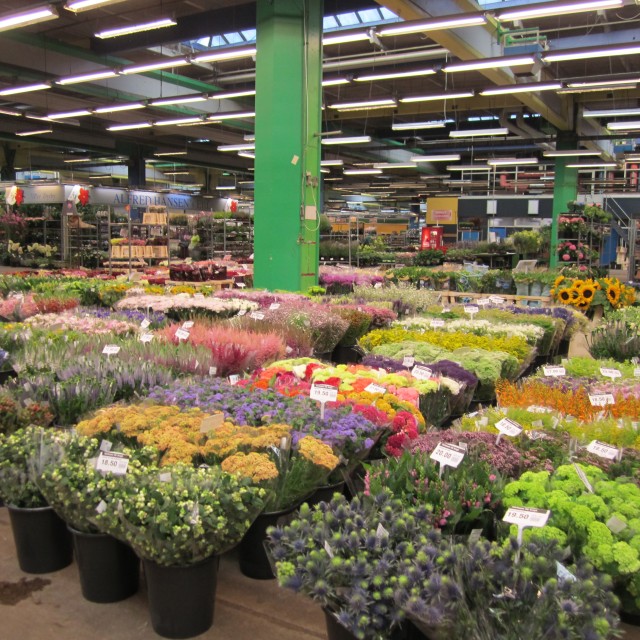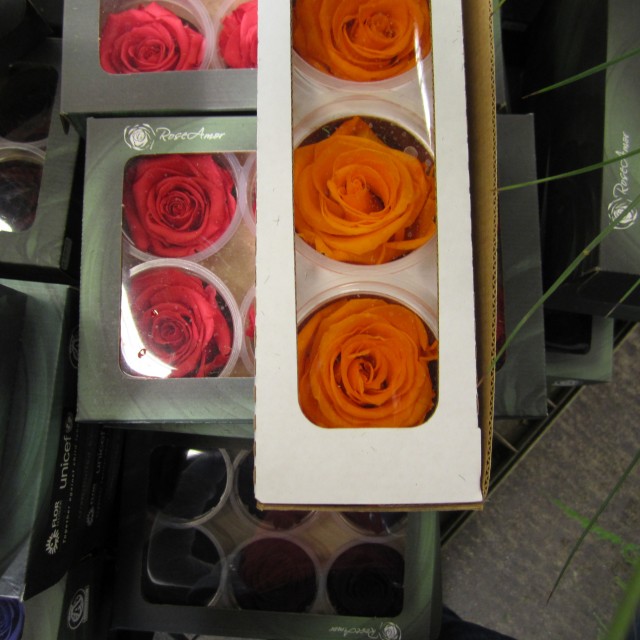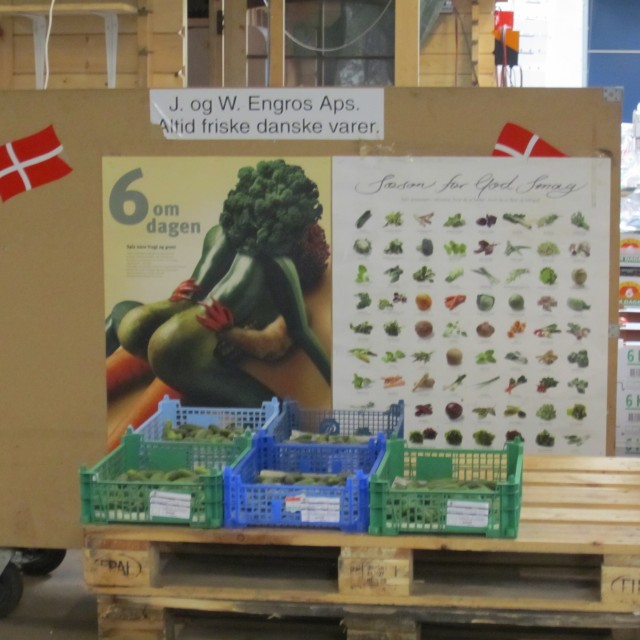Grønttorvet: The market’s market.
Where does food come from when you live in the city?
Walking around Copenhagen, there are lots of small kiosk style stores (grønthandler) with fruit and vegetable stands lining their entry ways. On any city street you can find the sidewalk compromised with piles of produce-potatoes, leeks, carrots, cabbages, strawberries, apples, etc.-sitting out in carefully arranged stalls. Florists (blomsterhandlere), are the other prime exploiters of sidewalk space with their buckets of fresh blooms stretching out beyond the boundaries of the store front. These stores give the city the appearance of fecundity and abundance, but where does all of this apparent bounty come from?
A few weeks ago, I took a trip out to Grønttorvet, in the Copenhagen neighborhood of Valby, and saw first hand the markets’ market. Monday-Friday the giant warehouse opens at 4:30am to delivery trucks bringing in loads of flowers, plants, fruit, vegetables, and herbs. Some are coming in from Denmark, much comes over from Germany, and the rest is traveling long distances from ports worldwide.
Grønttorvet is a cooperative organization of green grocers and florists. The green market has appeared in various forms in and around Copenhagen for hundreds of years, finally forming a coherent organization in 1954. I visited the Valby warehouse with an artist friend who was looking for a source of bulk moss for an art project. The market opens early, its business complete by 9:30 in the morning, the produce and plants distributed to shelves and sidewalks around the Copenhagen area. We arrived at 8:00am and the bustle was already slowing down. We wandered in and out of aisles of tightly packed and stacked vegetables, greens, mangoes, melons, and every other type of you might have seen in your local market and some you haven’t. The giant hall had cabbages in styrofoam, haystack size bundles of herbs, buckets, as well as and individually packaged fresh, flower blooms-any and every color of flower was available.
In contemporary urban life, we are, for the most part, separated from our food. Food appears in the grocery mega stores and corner kiosks each day, wrapped in plastic, and we know little about where it comes from. A clean grab and toss into our shopping basket, we do not experience dirt under our nails when picking our a package of carrots. If we think about where all of this comes from, we might think of a farmer somewhere out in the countryside. However, Grønttorvet was not an experience of reconnecting with my local farmer in the fields. There were fields in the green hall, but they were fields of flowers in buckets.
The giant green market specializes in abundance, not in local food or local farmers- a globalized green grocers.
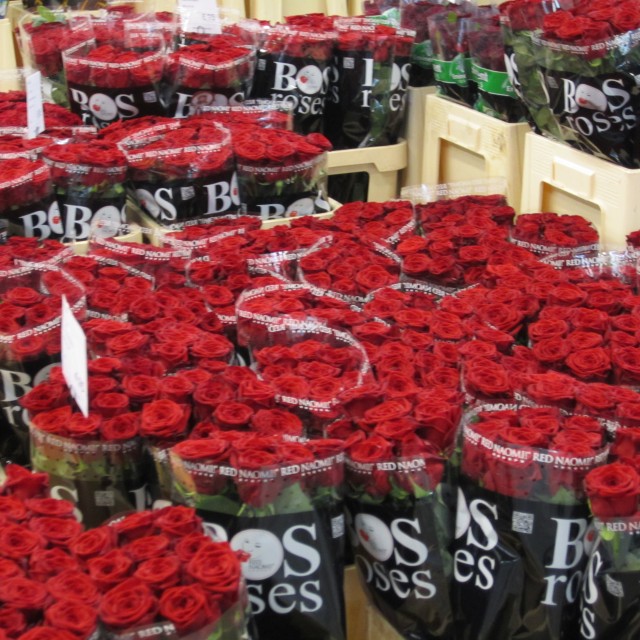
Perfect blooms come encased in cardboard and plastic.
We did talk with one herb grower, when my friend bought a bundle of dill from her stall. With her hands gnarled, ostensibly from working outdoors, she complained about the wet weather affecting her crops. So, the alienation of the plastic wrapped produce wasn’t complete.
This is part of contemporary farm life-these mega urban distribution points-with produce spilling out in cars and trucks. The experience left me wondering how a system like this can function beyond a petroleum based society. It most likely wouldn’t as it seems so impossibly fragile.
I encourage everyone to trace their food back to it’s source. Is there something comparable to Grønttorvet in your neighborhood?
And remember to eat your vegetables–6 a day at least. Maybe try to visit a farm once a year and get food from a farmer directly. It is a transformative experience and the food will taste better. It is amazing to taste trust in your food – trust of knowing who made what you are eating.
Radio Aktiv Sonic Deep Map (2013)

SUPERKILEN – Extreme Neoliberalism Copenhagen Style

Read Brett's essay about the park.
Download our guide:

This is our guide to how-to books from the counterculture of the 60s and 70s. Click to get the download page.
Categories
- Agriculture (11)
- Animal sounds (1)
- Artist parents (19)
- Arts and culture (106)
- Bees (3)
- Book reviews (14)
- Books (18)
- Critical essays (5)
- Daily Photo (5)
- Design (36)
- Dirt (11)
- Environmental activism (43)
- Exhibitions (24)
- Farms (11)
- Forest (7)
- Friday connect (15)
- Growing (42)
- Habitat (38)
- Homesteading (16)
- Interviews (15)
- Kitchen (14)
- Living structure (9)
- MISC (15)
- Mythological (2)
- Neighborhood (83)
- Ocean News (1)
- Our Art Work (21)
- Personal – Design/Art (3)
- Play (2)
- Playground (4)
- Projects (21)
- Public space (53)
- Resilience (13)
- Sea Side (2)
- Sojabønner (2)
- Tofu (8)
- Vermont correspondence (7)
- Water (3)
- Wednesday picture (31)
- Workshop (1)
Video interview:

Watch our interview of SeedBroadcast, a mobile project that is part seed library and part seed-saving-story-collecting machine-recording the stories of seed saving, farming, and food sovereignty work being done around the US.

Download a poster Bonnie made about biodiversity in a vacant lot in the Amager borough of Copenhagen, in collaboration with biologist, Inger Kærgaard, ornithologist, Jørn Lennart Larsen and botanist, Camilla Sønderberg Brok: A BRIEF TAXONOMY OF A LOT

We made and installed a network of bat houses in Urbana, Illinois, to support the local and regional bat population, but also to begin a conversation about re-making the built environment.
READ MORE
BOOK REVIEW:

We write often about artists and art groups that work with putting ‘culture’ back in agriculture. Here is a new favorite: myvillages, a group of three women based in Germany, the Netherlands, and the UK. Read more...

Post Revolutionary Exercises
We really admire the dedicated hard work of Kultivator who seeks to fuse agriculture and art in their work. Click this sentence to get a PDF of their poster collection called "Post Revolutionary Exercises."

Cultural Practices Within And Across
This amazing book networks urban and rural resilience and sustainability projects around the world. Deeply inspiring projects in Romania, Paris, San Francisco, and elsewhere.
• Read our review of the book.
• Buy the book.
• Download the book.

